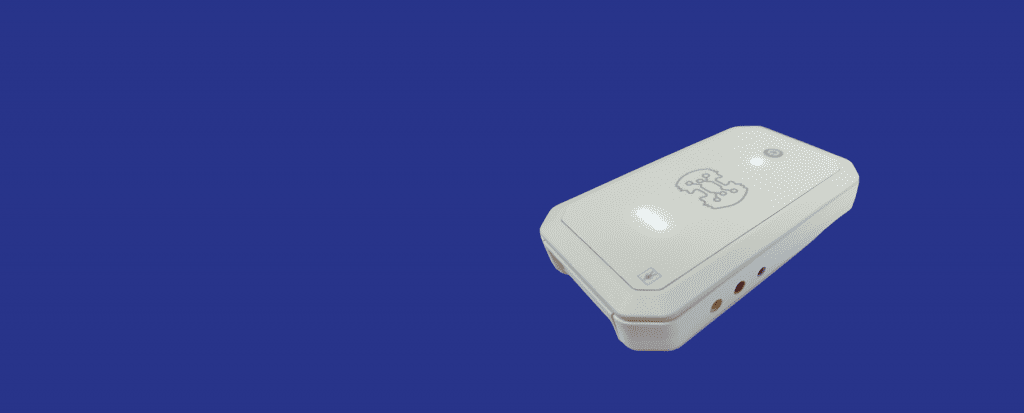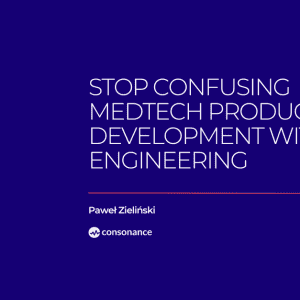The Vital Connection: Identification and Traceability in MedTech Manufacturing

In the intricate world of MedTech manufacturing, precision and quality are paramount. Two fundamental concepts, identification and traceability, play a vital role in ensuring that medical devices meet the highest standards and regulatory requirements.
Table of Contents
Understanding the MedTech Manufacturing
Though these terms may appear similar, they each hold unique significance and work in harmony to uphold the integrity of the MedTech industry. In this article, we delve into the essence of identification and traceability, explore their purposes, and reveal how they can be seamlessly integrated for a seamless manufacturing process. Let’s start with the basics.
Identification in MedTech
Identification involves marking individual products or batches of products in a way that sets them apart from others. As per the ISO 13485:2016 standard, it is crucial to maintain the identification of a product’s status throughout its entire lifecycle, including production, storage, installation, and servicing. This ensures that only authorized products that have passed mandatory inspections and tests are dispatched to the market.
Traceability in MedTech
Traceability, on the other hand, focuses on marking a product in a way that allows for the tracking of every operation it undergoes throughout its history. By meticulously recording and monitoring a product’s unique identity through the production process, we can ensure that only products and subcomponents that have undergone the necessary inspections and tests are utilized.
Identification at Various Stages
Identification is a multi-stage process, starting with the initial control of incoming components. During this stage:
- Supplier Name: Components are identified based on purchase records, including the name of the supplier.
- Serial/Batch Number: A unique serial or batch number is assigned to each component to distinguish it.
- Date of Receipt: The date of receipt is documented for quality control and traceability.
- Invoice Number: Invoice numbers are recorded for financial and administrative purposes.
- An additional facilitation during incoming control is spatial organization and the use of color-coded markers. These markers, such as red for non-compliant components, green for compliant ones, and yellow for unverified items, aid in easy identification and sorting.
Moving to the production stage:
- Identification of Materials and Subcomponents: Containers holding subcomponents or components are labeled to indicate which workstation they should be directed to. This ensures efficient workflow and minimizes errors.
- Serial Numbers and Basic Identification: Certain components, such as printed circuit boards (PCBs), have labels with serial numbers and essential identification details. This practice streamlines the assembly process.
- Workstation Marking: Workstations are clearly marked as per the production plan, ensuring that products progress through the manufacturing process in an organized and controlled manner.
For the final product:
- Individual and Collective Labels: Medical products are marked with individual and collective labels that offer essential information for users and regulators.
- Separate Space for Finished Products: To maintain strict quality control, a separate space is designated for finished and released products, preventing any mix-up or contamination.
Identification from the User’s Perspective
End-users of medical devices benefit from an additional layer of identification. The Medical Device Regulation (MDR) imposes the Unique Device Identification (UDI) code system. While the UDI system is a comprehensive topic, it is a pivotal aspect of ensuring the identification and authenticity of medical devices in the market.
The Essence of Traceability
Traceability is the ability to trace the history of a product. It encompasses a range of activities that facilitate the tracking of a product’s journey from inception to the end user.
Here’s what it includes:
- Maintaining Customer Order Records: Detailed records of customer orders ensure that products are manufactured and dispatched as per demand.
- Documenting and Maintaining Job Instructions: Proper documentation of job instructions guides the manufacturing process, ensuring consistency, repeatability and quality.
- Production Reports: These reports, including final and interoperative inspections, contain data about individuals involved in the manufacturing process, test and release dates, serial and batch numbers, error descriptions, and potential repairs of individual devices.
- Tracking Components: Tracking the components used in the production of specific batches or even individual devices is crucial to identify any anomalies or quality issues.
Traceability answers the crucial questions of who, what, when, how, and with what. It forms the backbone of quality control in MedTech manufacturing.
The Symbiotic Relationship
It’s essential to note that effective traceability cannot be achieved without strong identification. These two concepts are inextricably linked. Identification provides the foundation upon which traceability is built. Without a robust identification system, traceability is compromised, potentially leading to lapses in product quality, safety, and compliance.
In the intricate world of MedTech manufacturing, precision and quality are paramount. Identification and traceability are the bedrock on which the industry stands. By understanding their significance and integrating them effectively, manufacturers can ensure that medical devices meet the highest standards and deliver optimal outcomes for patients and healthcare providers.
In conclusion, the relationship between identification and traceability is a critical one, ensuring that the MedTech industry continues to deliver the highest quality products to the healthcare sector.







